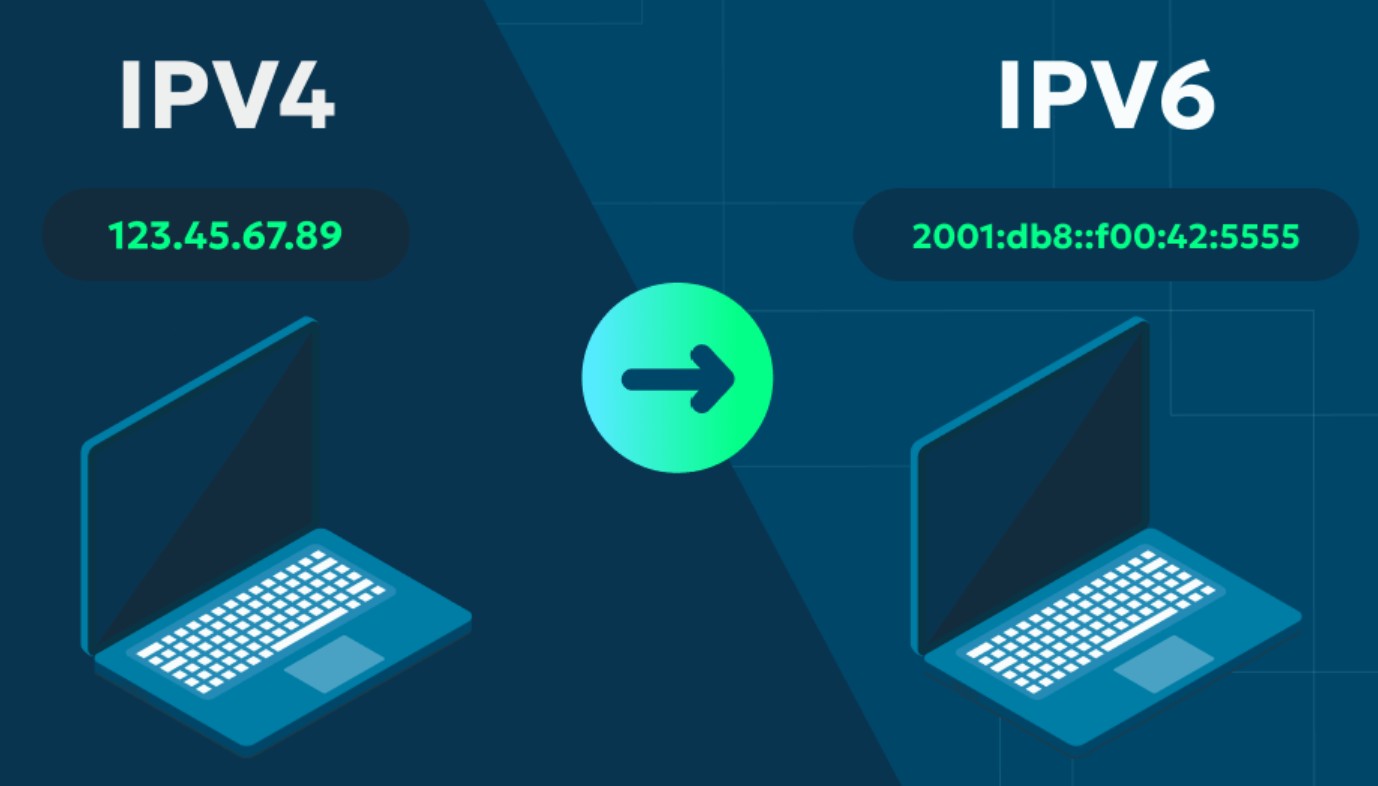If you enable IPv6, a feature now available in most modern routers, you can avoid the lag and speed issues associated with IPv4 and CGNAT. It is easy.
When the Internet was invented in the early 90s, no one imagined that a 32-bit public address range encompassing 4,294,967,296 IP addresses would be necessary. An IPv4 address looks like this: 192.168.0.1 (private address of a typical router).
By 2011, it was well and truly exhausted, and broadband providers began to utilise CGNAT Servers (Carrier-Grade Network Address Translation) to share a single public IPv4 address among multiple users.
Think of it as a single public phone number for all users, and the CGNAT server must determine where to direct the call. That was fine for a while, but as Broadband took off, CGNAT servers became overloaded, laggy, and sometimes unreliable. They also prevented things that required a fixed IP address, like remote access, web hosting, and port forwarding.
Today, CGNAT contention ratios (the number of users per public IP address) are closely guarded secrets, but there are some guidelines. An IP address has up to 65,000 ports (think of these as doors to your device) to allow FTP, SSH, Telenet, SMTP, etc. There are about 500 commonly used ports, so logically, around 128 users can share one IP address.
You won’t be surprised that some NBN ISPs have two, three, four, or even five times this number sharing one IP address. As this is often the case all day and night, it becomes like a never-ending peak-hour traffic.
At the other end, the web page you are trying to reach becomes confused and times out, or the Cloudflare servers (designed to stop DDoS attacks) simply disconnect that IP address or starts issuing CAPTCHAs to see if you are human.

Enter IPv6
It has 340,282,366,920,938,463,463,374,607,431,768,211,456 addresses, which is often written as 340 undecillion. Read the Wiki for details. It is faster, has less header processing and is more reliable.
The problem arises because less than half of the world’s websites support IPv6. When a user requests a DNS resolution for a domain name, the DNS server will respond with both an IPv4 (DNS A) and an IPv6 (DNS AAAA) address if the domain name has both address records.
ISPs must operate a dual-stack network that allows both IPv4 and IPv6.
But there are differences in dual-stack networks. A cost-effective implementation is to pass all IPv4 and IPv6 traffic through the same CGNAT server, often by ignoring IPv6 DNS addresses and using the IPv4 one instead. That leads to even more congestion and lag for both IP types.
The more expensive option is a routed configuration, where IPv6 traffic bypasses the CGNAT and routes traffic via the CGNAT when it encounters a DNS A address.
Why bother to enable IPv6 on your home router?
Because over time, everything will transition to IPv6, and unless you are using a lazy, low-cost NBN ISP, about 50% of your internet traffic will bypass the CGNAT and be faster and more reliable.
How to enable IPv6 on your modem/router
Each brand and model will be different, and not every router supports both IPv4 and IPv6. Wi-Fi 6 or later routers will support dual stack.
The easiest way is to search for ‘How to enable IPv6 on Brand/Model’
Your ISP will also be able to assist you if you are unfamiliar with any settings.
Search for ‘How to enable IPv6 on (your ISP).
You cannot stuff it up because it will either work or not, and IPv4 settings remain unchanged.
How to Check
You can check at What is my IP address.
If you have a Windows PC, open Network settings and hardware properties, and you will see IPv6 as well as IPv4 (the numbers are indicative only)
IPv6 address: 2403:5807:54e2::1001
fda5:53d0:4ed2:c96e:519d:30e5:c202:dce0
Link-local IPv6 address: fe80::2f59:e363:7a73:fcb2%13
IPv6 default gateway: fe80::5ee9:31ff:fe91:bd08%13
IPv6 DNS servers: 2403:5800:100:1::142 (Unencrypted)
2403:5800:1:5::242 (Unencrypted)
IPv4 address: 192.168.60.63
IPv4 DNS servers: 202.142.142.142 (Unencrypted)
202.142.142.242 (Unencrypted)
Your ISP app should also show
IP Addresses
- 2403:5807:7fff:a093::/64
- 2403:5807:54e2::/48
- 144.6.40.40
Is it worth doing
For the past six months, we have recommended this to hundreds of readers. Feedback is that the internet suddenly becomes faster and more reliable, and no one has stuffed it up.
In many cases, it also eliminated the need to pay for a static IP address.
The issue with CGNAT contention will only get worse as more people connect. Currently, there are 8.6 million homes connected out of 12.5 million, and contention is expected to worsen.
You may not be aware that 5G smartphones have an IPv6 address for VoIP, enabling a direct connection to other IPv6 devices. It is the future.
Enable IPv6, Enable IPv6, Enable IPv6, Enable IPv6, Enable IPv6, Enable IPv6
Reading
Got a Wi-Fi problem but not much cash to fix it?
Crappy NBN Modem – here are a few better ones (2025 update network guide)









13 comments
Russell
I’ve noticed that Belong/Telstra VoIP uses IPv4, and requires CLAT to make a call if on IPv6-only (these telcos are IPv6-only on 5G). The implementation is broken (I can see on 2 Google pixels) so the connection is often dropped.
Obviously don’t bother with the antiquated Optus network. They don’t know what IPv6 is. I have no idea how that network is still running at this point.
Ray Shaw
Yes, we were surprised that Optus NBN does not support IPv6. I am equally surprised that Belon/Tesltra/Boost VoIP only uses IPv4. That is almost inexcusable. For our readers, CLAT (Customer-side Translator) is a component of the 464XLAT architecture used in IPv6-only networks to enable communication with IPv4-only devices and applications.
MarkD
Not mentioned in Ray’s otherwise excellent article is that running a dual stack of ipv4 and ipv6 has the added benefit of providing a level of redundancy.
If your ISP has issues with ipv4 routing then most of your applications (such as web browsers and ssh clients and whatnot) will automatically try ipv6 due to a commonly implemented technique called “Happy Eyeballs” (rfc6555).
Of course this won’t save you if your physical link to your ISP has issues, but I can assure that it has saved me many a time when ipv4 has failed or I have fat-fingered an ipv4 configuration locally.
So, my recommendation is, always turn on ipv6 at your home router. If your ISP doesn’t support it today then that’s not a problem as the day they turn it on, you automatically get the dual stack for free. Your router will simply periodically try and establish an ipv6 link in the background on your behalf.
Ray Shaw
Excellent feedback – that is the CyberShack community in action.
Mick Leahy
Hi Ray, I followed your reply to Robert as I have an iMac and got thru to the last task to open the Details window, but the Telstra connection is Locked. Any thoughts please?
Kind regards,Mick Leahy.
Ray Shaw
According to the web, Telstra supports IPv6 on both their mobile and NBN networks. For NBN connections, IPv6 is enabled by default. Its transition to IPv6 is ongoing, with a dual-stack approach ensuring both IPv4 and IPv6 addresses can exist during the transition. I suspect you need to call Big Puddle.
Chris
I just spoke to Optus.
They don’t, currently, support IPv6.
Amazing that probably the second largest ISP in Australia does not support this protocol!!
My current (9 year old) router does!
MarkD
Chris. The good news is that it doesn’t hurt to turn on ipv6 on your home router even if your ISP doesn’t support it.
So I would say, enable ipv6 on your end and maybe one day, many moons from now, Optus might turn on their end and then you magically get it for free!
Adam
That would explain why after googling and trying some configurations I could find that it would stillnot work. Maybe everyone needs to ask them the same question and they might get a shake up.
Steve
Optus…
This might explain my frequent pauses and drop outs.
Ray Shaw
Great feedback – I can’t believe Optus is so far behind the times. Time to move!
Robert
Hi,
How do I check my IPv6 on a mac?
Thanks fr your help.
Kind regards,
Robert
Ray Shaw
I don’t use Mac, but here is what I found: To check the IPv6 address on your Mac, navigate to System Settings > Network, select your active network interface (like Wi-Fi or Ethernet), and then click on Details. In the Details window, click on the TCP/IP tab. You will find your IPv6 address listed there.